The World Has Already Ended

"You say the ocean’s rising,
Like I give a shit,
You say the whole world’s ending,
Honey, it already did."
- All Eyes On Me by Bo Burnham
The world that many of us grew up in is already gone, replaced by a world of superstorms, megadroughts, brutal heat waves, rising sea levels, toxic chemicals, and mass extinction. It happened so gradually that most people didn’t even notice, but they will soon.
Many people, particularly those in first-world countries, have been relatively insulated from the effects of the polycrisis, even if they have seen their standard of living drop. So it’s easy for them to dismiss warnings about the end of the world.
I’ve often heard people say things like, “What’s with all the doom and gloom? Sure, the weather is a little worse, but for the most part, things are fine.” The purpose of this article is to prove that things are not fine. In fact, things are worse than ever, and it’s all downhill from here.
Civilization was born during the Holocene, an epoch that lasted about 10,000 years. During this time, the average global temperature was incredibly stable, never varying more than 1°C. As a result, weather patterns were also very stable, creating conditions that were perfect for societies to flourish.
With more predictable weather, farmers were able to greatly expand agriculture, and the ability to stockpile grain contributed to the development of the first civilizations. Humans have had the intelligence necessary to form civilizations for about 300,000 years, but the Holocene made it possible.
We inherited a beautiful world covered with vast forests and teeming with millions of species. And in just a couple hundred years, we destroyed it. Forests are dying, countless species are going extinct, and the weather has become increasingly dangerous and unpredictable.
The Holocene has ended, and we are entering a dark new epoch known as the Anthropocene, which is defined by humanity’s impact on geology and the Earth’s ecosystems. Let’s take a closer look at the Anthropocene and what we can expect to see as we journey through it.
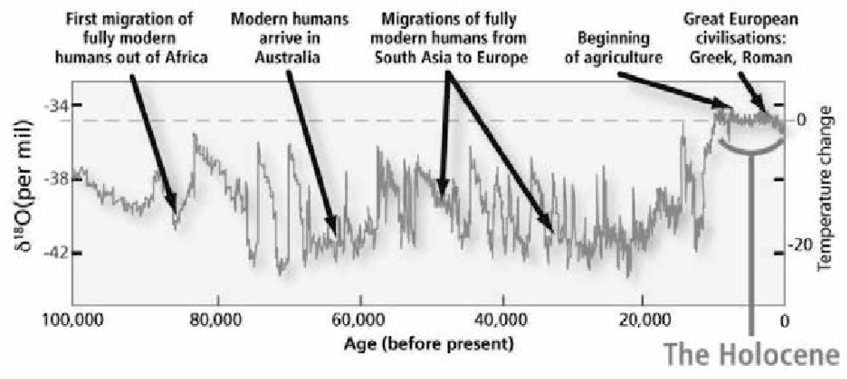
Climate Change
The most obvious sign that the Holocene has ended is climate change. Throughout the Holocene, the concentration of carbon dioxide (CO2) in the atmosphere was below 300 parts per million. Now it’s well above 400 parts per million and rising fast.
CO2 levels have spiked at various times throughout Earth’s history, but it’s usually from volcanoes. The result is widespread biodiversity loss because many species are unable to adapt to spiking temperatures.
Currently, CO2 is being emitted 200 times faster than past extinction events. That means temperatures are going to rise faster than they have in millions of years, setting us up for what could become the worst mass extinction event in Earth’s history.
Already, we’ve had the hottest 12-month period in 125,000 years. The average global temperature has risen nearly 1.5°C since pre-industrial times, bringing about the hottest summer on record and a series of devastating heat waves, some of which killed people when the power went out.
Later this century, the heat will make huge swaths of the planet uninhabitable for humans. When that happens, people will be forced to move closer to the poles, but those places will experience extreme heat waves as well, which will cause the permafrost to thaw faster, releasing more greenhouse gases and making the planet even hotter.
Greenland has already seen its share of record-breaking heat waves. Normally, the air above the peak of Greenland’s ice sheet is so cold that it only snows there. But a couple years ago, for the first time in recorded history, it rained, causing the ice sheet to melt even faster. At this point, it has shrunk beyond the point of no return and will add at least another foot of sea level rise.
Even Antarctica is getting extreme heat waves. Last year, parts of the continent had temperatures 38.5°C above normal, the hottest temperature anomaly ever recorded. The continent is becoming increasingly unrecognizable, with moss, algae, and flowers blooming like never before.
The ocean around Antarctica is also getting warmer. The lack of sea ice this year was so incredibly low that it shouldn’t have been possible. As a result, thousands of baby penguins died, and experts believe emperor penguins could go extinct by the end of the century.
It’s not just the sea ice that’s melting. Scientists now believe that the melting of the West Antarctic ice sheet is unavoidable and will eventually bring another 10 feet of sea level rise. This is a huge deal. It means thousands of coastal cities around the world will eventually be abandoned, and yet the average person doesn’t even know.
As the world warms, glaciers that people depend on for drinking and irrigation are melting. Nearly 2 billion people rely on the Himalayan glaciers for water, but they’re quickly disappearing. By the end of the century, they’ll be 75% smaller.
Civilization can’t exist without reliable sources of water, but climate change is warping the fresh water cycle, making many places too dry for societies to inhabit. We’re already facing a major water crisis, and this is just the beginning. Droughts are permanently changing the land and turning some places into deserts.
Things are so bad that entire lakes are drying up, ruining the lives of farmers, who are committing suicide at record rates. Even the Great Salt Lake will probably dry up by the end of the decade. When it does, it will produce plumes of toxic dust, putting the health of millions at risk.
The rivers are drying up, too. Both the Mississippi river and the Amazon river are hitting record lows. Some other rivers hitting record lows include the Nile river, the Indus river, the Rio Grande, and the Colorado river, but there are many others, not mention all the streams that are vanishing.
Farmers are increasingly relying on aquifers to water their crops, but those are also being depleted. Already, thousands of wells around the world are running dry, and farmland is being abandoned. This will push food prices even higher.
While some places are going through megadroughts, other places are having some of the worst floods ever. The kind of storms that used to happen once in a thousand years are now a regular occurrence. As a result, our flood maps are outdated.
Severe weather is now the new normal. Tornadoes are getting stronger and lasting longer, and category-5 hurricanes are now capable of popping up overnight. Even blizzards are becoming more common, quadrupling in number since the mid-20th century.
One reason the weather is becoming unpredictable is because of the polar jet stream, which is rapidly falling apart due to arctic amplification. Scientists believe it will move permanently by 2060, creating a whole new climate regime that our agricultural system was not designed for.
The oceans are also in crisis due to climate change. Heat is accumulating in the ocean at a rate of 5 Hiroshima bombs per second, protecting us from the bulk of global warming and making people complacent.
Meanwhile, the Atlantic Meridional Overturning Circulation (AMOC) is slowing down and will collapse some time this century. The result will be a sudden change in temperature and weather patterns around the world. Europe will become much cooler, North America will become much warmer, and weather patterns around the world will be permanently altered.
The change in ocean circulation will also impact marine ecosystems, causing a cascading effect on food chains. Already, massive dead zones in the ocean are killing fish by the tens of thousands, and record heat is killing phytoplankton, forcing fish to migrate North.
Ocean temperatures have been off the charts all year, and this is just the beginning. All of this is happening at a time when we haven’t officially reached 1.5°C of warming. Scientists believe the impacts of climate change will get exponentially worse as the planet warms, and we’re on our way to 4°C of warming by the end of the century.
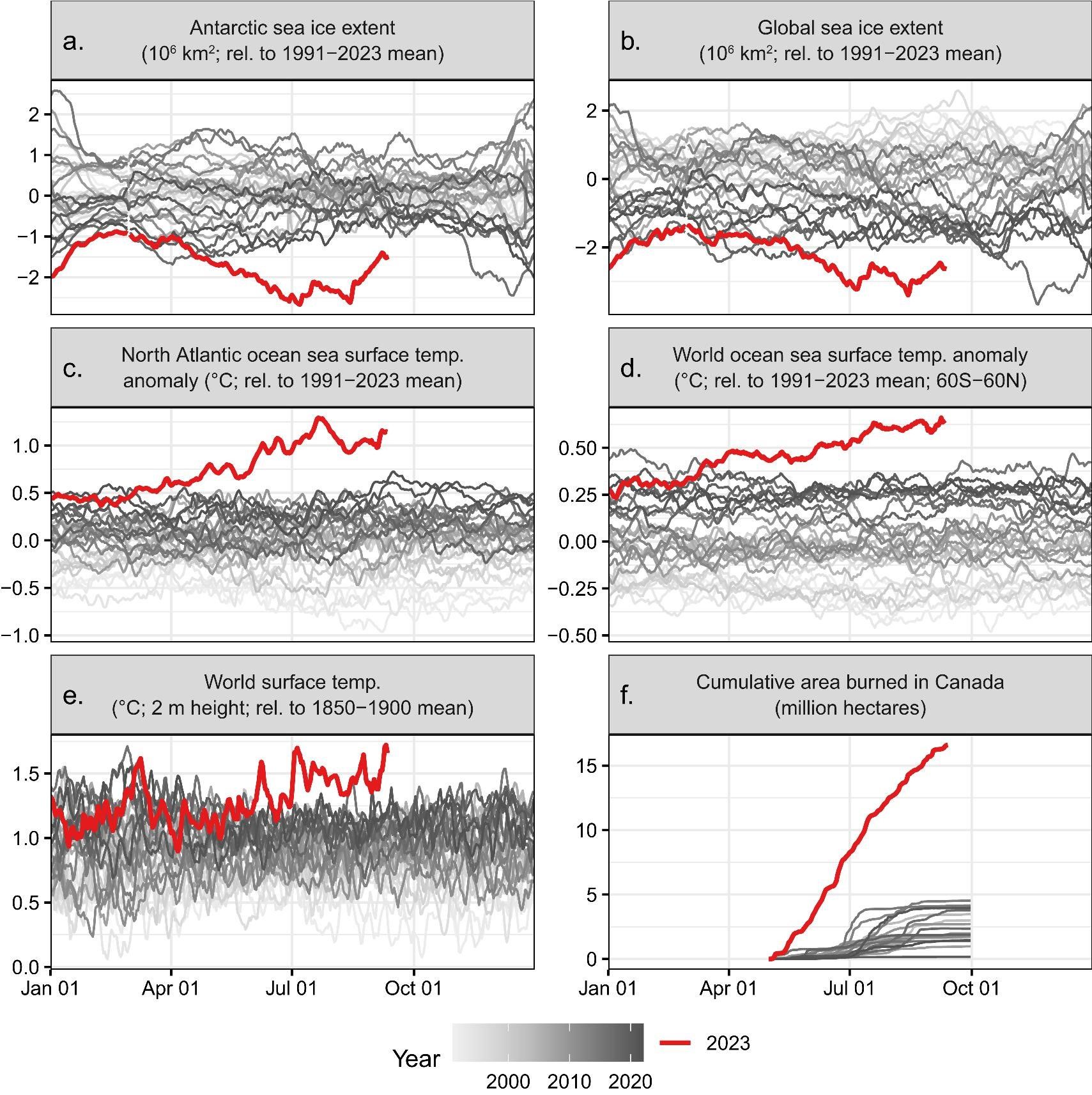
Pollution
Another sign that the Holocene has ended is the accumulation of synthetic chemicals in the environment, especially in the air we breathe. Air pollution from fossil fuels changes the brain, makes bones more brittle, and increases the risk of Parkinson’s disease. Already, air pollution kills about 7 million people every year, and the number keeps rising.
Another type of pollution that has gotten increasingly worse in recent years is chemical pollution—specifically, PFAS (per- and polyfluoroalkyl substances), also known as “forever chemicals.” These synthetic chemical compounds are used in thousands of everyday products and inevitably make their way into the soil, plants, water, and air.
Even tiny amounts of forever chemicals pose health risks and disrupt key biological processes, contributing to all sorts of diseases in both humans and animals. Huge amounts of forever chemicals can be found in wildlife all over the world. It’s so bad that eating one wild fish is the equivalent of drinking tainted water for a month.
This map shows 50,000 sites around the U.S. that are contaminated with forever chemicals. Even rainwater contains forever chemicals above the EPA’s official safety limit. Think about that: Rain, which used to be pure and safe to drink, is now dangerously polluted. All these forever chemicals in our environment is just one of the reasons cancer rates are skyrocketing.
Another type of pollution that’s getting exponentially worse is plastic pollution. For a long time, plastic was considered safe, but we now know that it eventually breaks down into harmful microplastics, even when recycled.
As single-use plastic production ramps up, microplastics are making their way into every corner of the Earth. They’ve been found in the pristine snows of Antarctica and deep inside caves that were closed to the public for decades. That’s because microplastics are now part of the atmosphere. There are so many of them in the clouds and in the rain that they’re even disrupting weather patterns.
Most microplastics end up in the ocean, going as deep as the bottom of the Mariana Trench. And recently, scientists realized there are a million times more microplastics in the ocean than we thought. It’s so bad that the oceans are literally emitting microplastics.
With all these microplastics in the air, most people are now inhaling a credit card’s worth of plastic every week. They’re also eating that much plastic every week, and it’s severely damaging their intestines.
Our bodies our now filled with microplastics. They’re in our lungs, in our veins, in our hearts, and even in breast milk. They’ve also made their way into our brains, resulting in toxic effects that we’re only beginning to understand.
Millions of years from now, when the Earth has recovered from the sixth mass extinction, one of the only signs that humans existed will be a thin layer of plastic in the fossil record.
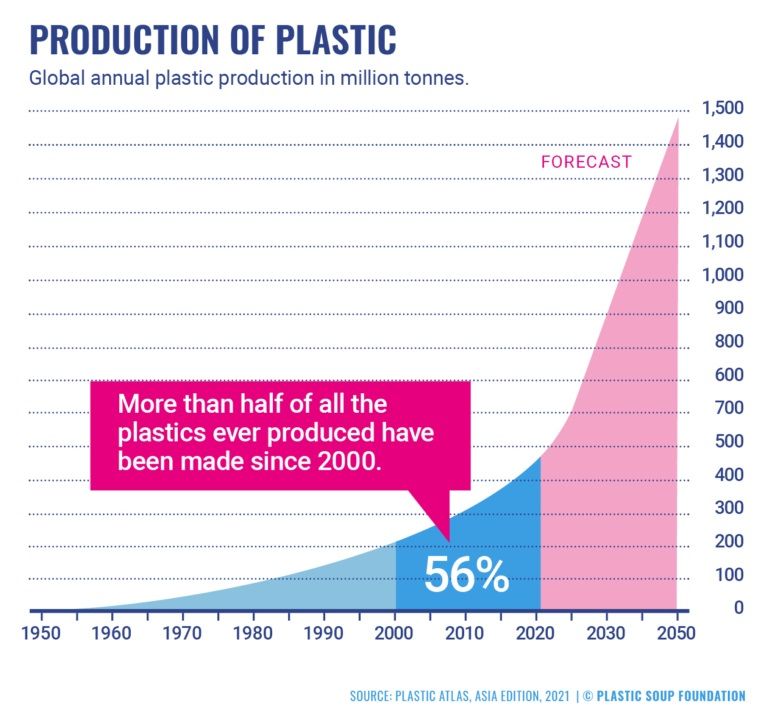
Biodiversity
Speaking of the sixth mass extinction, it is well underway and rapidly getting worse thanks to climate change, pollution, and habitat loss.
Humans have already killed 83% of wildlife and 1/2 of plants, and they’ve wiped out 71 branches of species from the tree of life. A couple centuries ago, humans made up a small percentage of animal life, but today, humans and their livestock make up 96% of animal biomass.
Since 1970, global wildlife populations have fallen by 69%, with species going extinct 1000 times faster than they were before humans came along. It’s already so bad that it will take the Earth at least 10 million years to recover. In the meantime, food webs that we rely on for survival are in danger of collapsing.
Animals of all types are in decline: mammals, reptiles, amphibians, and especially birds. Since 1500, at least 182 species of birds have gone extinct, and today, half of the world’s bird species are in decline.
Some of it is from extreme heat, some of it is from plastic pollution, and the rest is from other human activities. So far, 1/3 of North America’s birds have vanished, and 2/3 of bird species are facing extinction.
Even more alarming is what’s happening to insects. In the past 50 years, insect numbers have declined by 75%. Currently, insect populations are declining exponentially at a rate of about 2.5% per year. Although insects are unlikely to disappear completely, at this rate they could be mostly gone by the end of the century.
Insects are possibly the most important type of animal because every other animal—plus many plants—depend on insects for their survival. That’s why scientists warn that the collapse of insects means the collapse of nature. There is no way for humans to replace the work done by quintillions of insects every day.
One of the more immediate consequences of the insect apocalypse is the decline of pollinators. About 75% of the world’s flowers and 35% of the world’s crops depend on pollinators to reproduce, but already, there are 70% fewer pollinators in polluted areas because the smell makes it difficult for them to find flowers.
Cleaning up the air pollution would help, but honeybees are living half as long as they used to because of other environmental contaminants such as pesticides. In some places, flying insect numbers have plunged as much as 60% over the past 20 years, and the lack of pollinators has already reduced the number of healthy foods farmers can produce.
If there’s any type of life more important than the insects, it’s marine life. As Paul Watson once said, “The reality is that if the ocean dies, we die – because the ocean provides all of those things which make it possible for us to live on the planet.”
He went on to explain that organisms such as phytoplankton produce 70% of the oxygen we breathe, and their numbers have dropped 40% since 1950 and continue to decline by about 1% per year. The disappearance wouldn’t cause everyone to suffocate immediately as the atmosphere has a large reservoir of oxygen, but it would cause marine food chains to collapse, which would have cascading effects on all plant and animal life.
Signs that the ocean is dying are all around us. The world’s fisheries are collapsing, and the fish that remain are much smaller than their forebears. Gray whales are washing up dead on the coasts, thousands of fish are suffocating, and billions of snow crabs are starving to death. These are the early stages of the greatest extinction of marine life in 250 million years.
In fact, the ocean is warming so quickly that humans could potentially wipe out almost all marine life. Even if they don’t, plastic is likely to outweigh all the fish in the ocean by 2050, making it even harder for marine life to recover.
The forests will also have a hard time recovering. Over the past three centuries, humans have destroyed about 35% of the world’s forests. For a long time, deforestation was the main reason, but now climate change is killing the forests as well, causing them to dry up and shrink.
Take the Amazon rainforest, for example, the largest and most biodiverse forest on the planet. It used to act as a carbon sink, but thanks to droughts and wildfires, it is now emitting more carbon than it absorbs. Many scientists believe it has already reached its tipping point and will turn into a grassy savannah later this century.
It’s not just the forests. Plants everywhere are going extinct 350 times faster than usual. More than 1/3 of the world’s wetlands have been destroyed, 40% of plant species are at risk of extinction, and the deserts are getting so hot that saguaro cacti are collapsing. If you’re wondering what most of the world will look like by the end of the century, picture a barren wasteland.
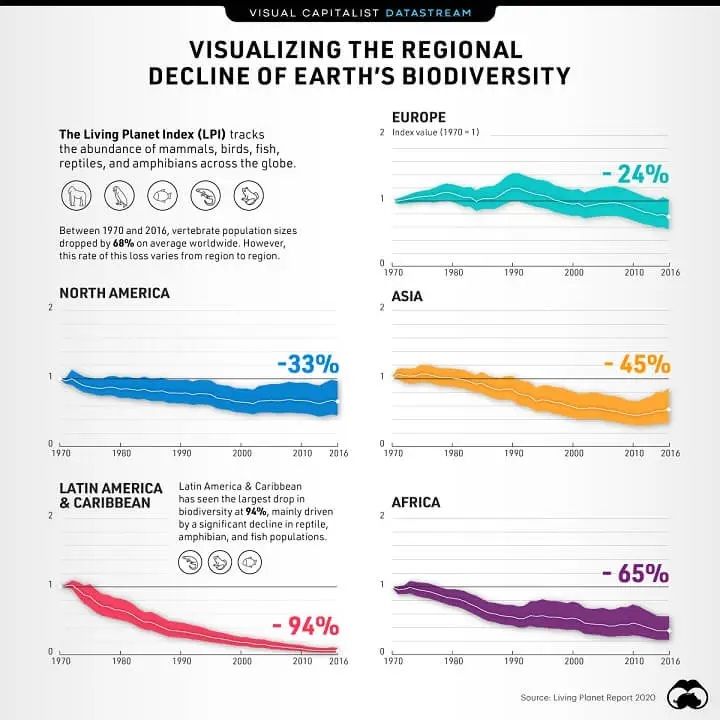
Planetary Boundaries
If someone were to invent a replicator like in Star Trek, it might be possible to survive on a barren wasteland. Unfortunately, we rely on the richness of biodiversity to grow the food we need. As the food chain collapses, it will get harder and harder to produce enough calories for everybody.
95% of the food we produce depends on topsoil, which is now eroding up to 1000 times faster than it forms. Since farmers began tilling the land of the Midwestern United States 160 years ago, 50 billion tons of topsoil have been lost. Because of topsoil erosion, 30% of the world’s arable land has become unproductive.
Meanwhile, farmers are complaining that there are no normal seasons anymore. Without the predictable weather patterns we enjoyed during the Holocene, an area can go from extremely dry to extremely wet in a matter of days, ruining farmers’ crops. And even if floods weren’t a problem, droughts and heat waves would kill the crops instead. On top of all that, the food we do manage to grow is less healthy.
In September of 2023, a team of scientists quantified nine processes that regulate the stability and resilience of the Earth system. They’re called planetary boundaries, and once they’re crossed, the environment is no longer able to self-regulate.
The nine boundaries they identified include climate change, biosphere integrity, land system change, freshwater change, biogeochemical flows, novel entities (synthetic chemicals), ocean acidification, atmospheric aerosol cooling, and stratospheric ozone depletion. As it turns out, we have already crossed six of these boundaries.
Think about what this means: The world in which civilization evolved is already gone. Everything is changing, and the speed of that change is accelerating. As Climate Change Doomer tells us again and again, “Everything humans have built, was designed for a climate that no longer exists.”
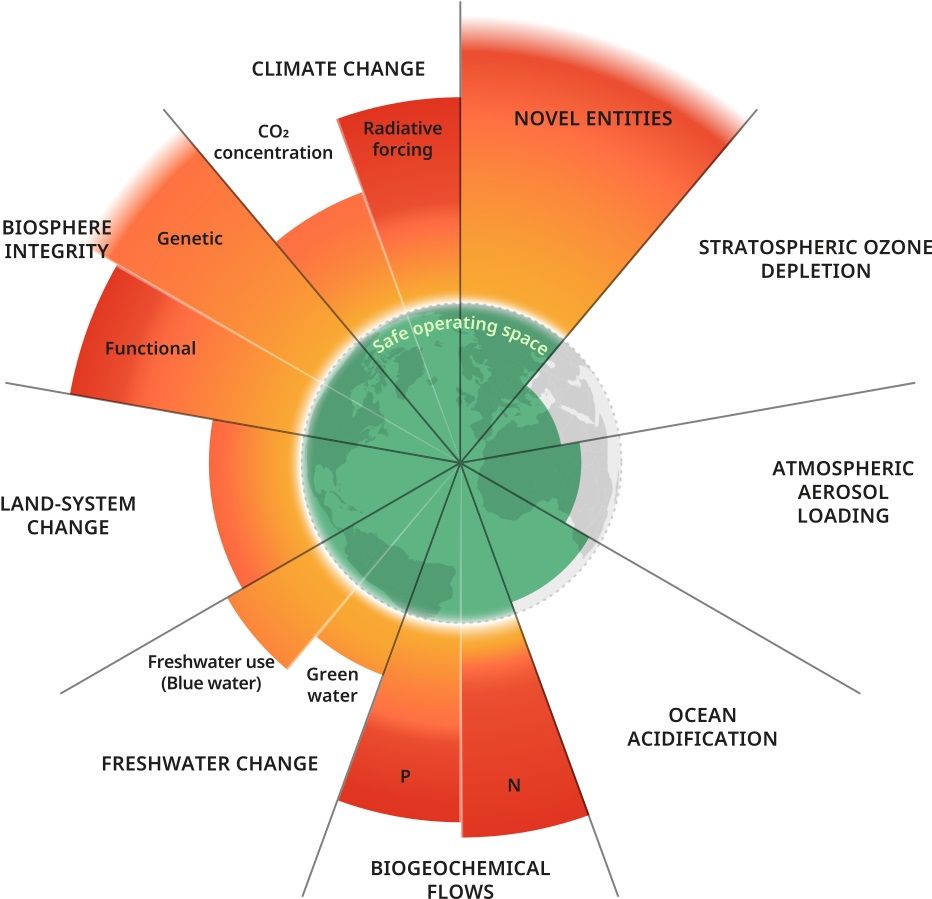
Conclusion
So what do we do?
As I hope this article has made clear, it’s already too late to return to the Holocene. The Anthropocene is here to stay, and the sixth mass extinction has only just begun. The main question now is whether humans will go extinct, but that depends on what we do next.
Our best shot at saving the human race is to stop burning fossil fuels as quickly as possible and return to local living, where communities grow their own food and create their own products. This would require a radical transformation of global society where every industry that doesn’t contribute to people’s basic needs would be sidelined, and 90% of people would work on farms, as they did over two centuries ago.
Sadly, the odds of this actually happening are… let’s say… small. That doesn’t mean we shouldn’t keep trying, but the reality is that humanity was doomed from the start. As explained in this article, “The evolutionary process elevates the most competitive and exploitative species and so the very reason for humanity's success is the cause of our inevitable collapse.”
This is why I’m a doomer. Because the world has already ended, and human nature prevents it from creating a better world. Now, I’m just waiting for the end while enjoying the time we have left, like someone watching their last sunset.
I’ll close with some more song lyrics:
Oh-oh, is this the world we created?
We made it on our own
Is this the world we devasted, right to the bone?
If there's a God in the sky, looking down
What can he think of what we've done
To the world that He created?
- Is This The World We Created…? by Queen
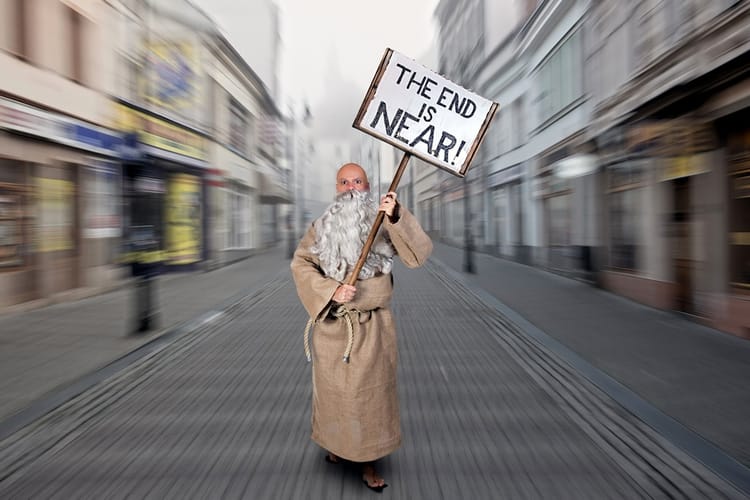




Member discussion